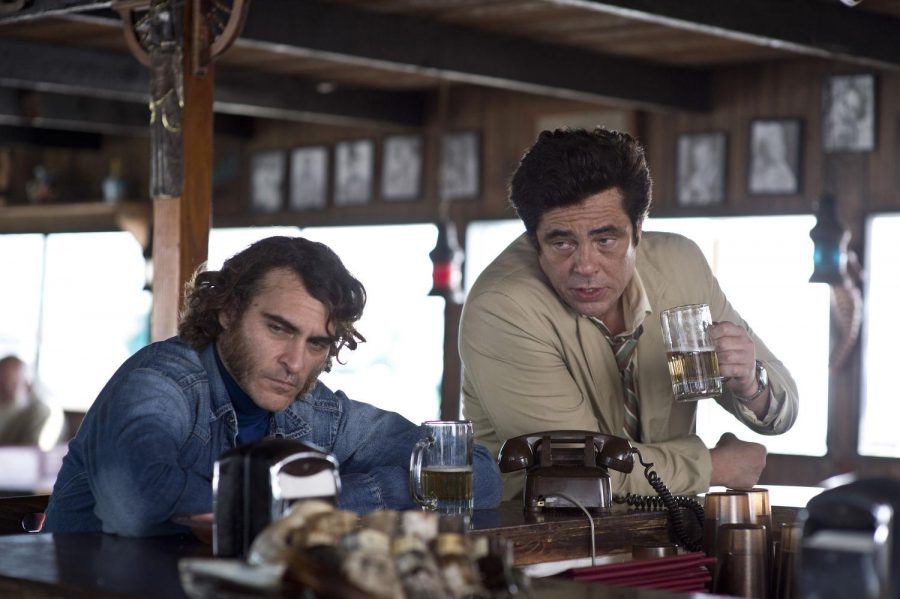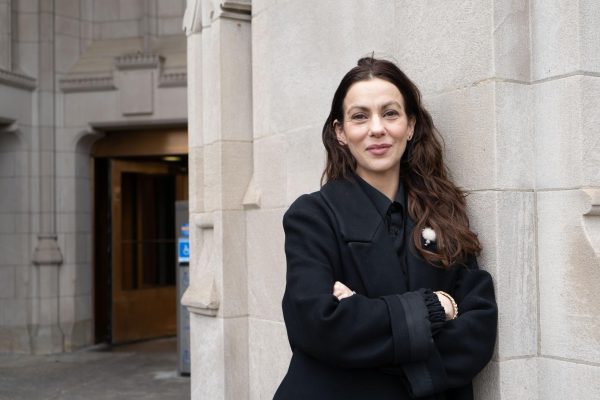‘Inherent Vice’ an engrossing fever dream
January 12, 2015
Directed by: Paul Thomas Anderson
Starring: Joaquin Phoenix, Josh Brolin, Owen Wilson
Rated R for drug use throughout, sexual content, graphic nudity, language and some violence
Grade: A
There are some writers of fiction whose work has never — and most likely will never — grace the silver screen because their plot lacks the coherent dramatic structure that a good film needs. Thomas Pynchon, considered by many to be the most influential practitioner of postmodern literature and one of America’s most important 20th-century writers, was one of those writers.
That is, before director Paul Thomas Anderson was bold enough to adapt Pynchon’s 2009 book “Inherent Vice,” a novel that, although considered light Pynchon, still has enough outlandish postmodernist structural elements, complex themes and weighty ideas to keep any director’s head spinning.
If anyone in Hollywood can climb that mountain, the five-time Oscar nominee would be as good a bet as any. Throughout his successful career, Anderson has demonstrated an uncanny knack for viscerally thrilling filmmaking that also deserves praise for its depth of focus and complexity. Much like how Pynchon’s success lies in combining his wit and unparalleled way with words with an engrossing, if not highly maddening, plot, Anderson, too, wows audiences with his technical virtuosity and decidedly original tales.
It would seem, then, that Anderson adapting a Pynchon novel would be a match made in movie heaven. Thankfully, Anderson doesn’t disappoint, transmuting the Pynchon tale into an intoxicating and, often, uproarious stroll through the tail end of the 1960s. It follows private detective Doc Sportello (Joaquin Phoenix), a stoner struggling, in vain, to retain as much of the psychedelic ’60s as he can before Manson Family mania and Nixon politics thrust America into a new, more paranoid age.
The film opens as Doc receives a visit from old fling and mesmerizing beauty Shasta Fay Hepworth (Katherine Waterston). If dope fails to get the job done, her intent stare teamed with the soft, melodic rhythm of her voice is enough to throw any man into a hypnotic trance. She asks Doc for help untangling her mess with new love interest and hotshot real estate mogul Mickey Wolfmann (Eric Roberts). Wolfmann’s wife, who has another lover of her own, is threatening to throw him in the loony bin. Before Doc can even ask questions, he gets clubbed over the head, passes out and awakens to the news that both Shasta and Mickey have gone missing. He’s a suspect in the murder of the man he found lying next to him when he woke up, Wolfmann’s body guard Glenn Charlock.
Hippie-hating detective and aspiring actor Christian “Bigfoot” Bjornsen (Josh Brolin) questions Doc, and Bjornsen’s aggression evolves from simple bigotry to a repressed melancholy, indicating that there is more to the man under the flat-top. But, in true Pynchon fashion, no storyline is held onto for too long. Shortly after, former heroin addict Hope Harlingen (Jena Malone) asks Doc to help track down her husband, saxophonist Coy (Owen Wilson), whom she believes to be alive. A mysterious outfit called the Golden Fang appears to be the great unifier. Much like the muted post-horn in Pynchon’s “The Crying of Lot 49,” the Golden Fang is a variable symbol, which can be anything from a boat, to a high-rise shaped like a tooth, to a front for a heroin cartel. But, figuring out which exactly is useless — it could be all of these at once, or none.
The same can be said for a number of characters throughout the film, as everyone from Doc to Coy repeatedly dons different hats. No one is who they seem, and Anderson gives us good reason to doubt both the narrator, Sortilege (Joanna Newsom), and the very images placed in front of our eyes. Like the smoke from Doc’s joint, characters and motivations form and then dissipate in an instant, and answers, once found, only lead to more questions.
Doc is about as hardboiled as a kitten, and the film resembles less a 1950s film noir than it does a doper’s fever dream. And, although some plot lines seem to resolve at the end, nothing much really changes. Still, by the film’s end, you can’t help but feel transformed by the experience.








